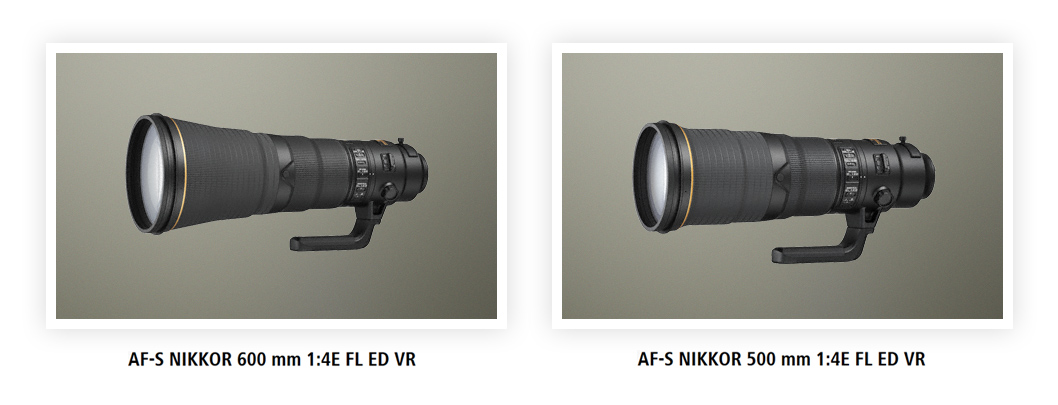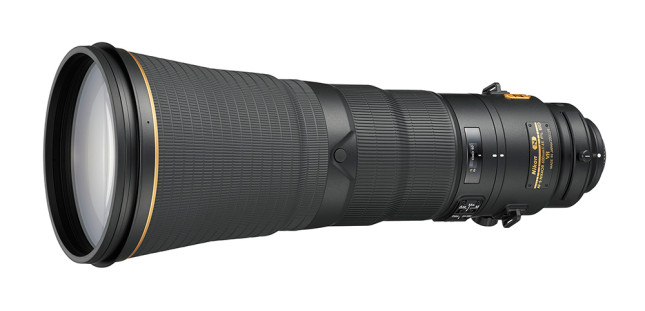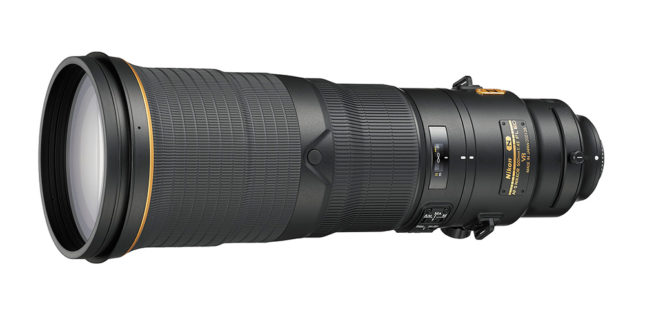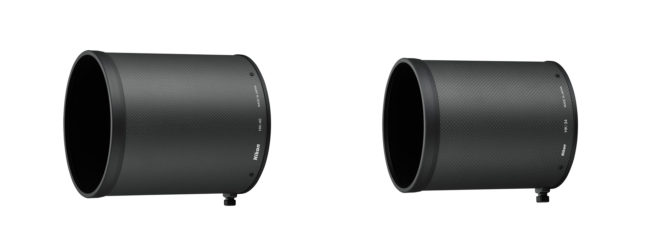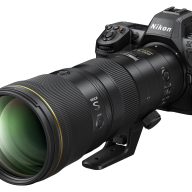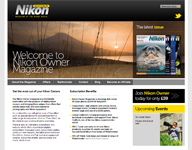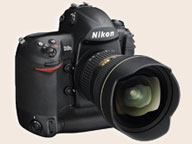Nikon lightens the super-telephoto load with the new
AF-S NIKKOR 600mm f/4E and the AF-S NIKKOR 500mm f/4E
London, UK, 2nd July 2015: Nikon today announces two new professional super-telephoto lenses with the lightest build in their class: the AF-S NIKKOR 600mm f/4E FL ED VR, and the AF-S NIKKOR 500mm f/4E FL ED VR.*
These new lenses see Nikon improve the performance and significantly reduce the weight of two renowned super-telephoto workhorses. The new 500mm f/4E is 20 percent lighter than its predecessor. The new 600mm f/4E is an incredible 25 percent lighter.
Both lenses have all-new optical designs that employ lightweight fluorite glass elements, as well as a Nano Crystal Coat and 3 ED glass elements. The impressive weight reductions are made possible with the use of fluorite elements, and a construction that incorporates a magnesium alloy. New technologies feature in both lenses. These include an electromagnetic diaphragm for consistent, more precise exposures during high-speed bursts: a feature that anyone who shoots fast-moving action sports will appreciate. Each lens also features the latest incarnation of Nikon’s Vibration Reduction technology, which offers an impressive four-stop advantage and includes SPORT mode for tracking fast action. Other new features include a rotating tripod collar with a Kensington lock slot, and completely new bearings for smooth switching between compositions. Also, both lenses feature Nikon’s proprietary fluorine coating, which actively repels water, dust, and dirt from the lens surface.
Edward Allinson, Junior Product Manager for Lenses & Accessories at Nikon UK says: “These brand new NIKKOR lenses tackle the issue of weight head-on with their new and improved lightweight build. Both super-telephoto lenses have a combination of exceptional performance with a significant reduction in weight compared to their predecessors, designed for comfortable and more flexible use in the field.”
Shifting the balance
Anyone who has spent time in the field with a large super-telephoto lens knows every gram counts and speed makes a real difference. Thanks to the use of fluorite glass, the lightweight build of these new lenses comes at no cost to image quality. At 3090 g (approx.), the new 500mm lens is 790 g lighter than its predecessor, and actually weighs less than the current 200-400mm f/4 VR II. The new 600mm lens weighs approximately 3810 g, and is an impressive 1250 g lighter than its forerunner. Both lenses are less ‘front-heavy’, and the use of fluorite elements contributes to improved optical performance too. Combined with the fast f/4 maximum aperture on both lenses, and Nikon’s impressive Vibration Reduction, these new super-telephotos deliver staggering clarity and precision. Sports and wildlife pros have less to carry, and more to shoot with.
Steady and reliable
A host of new features ensure Nikon’s new 500mm and 600mm lenses deliver exceptional shooting stability. The latest generation of Nikon’s VR technology gives both lenses an impressive four-stop advantage, effectively minimising the blur that can be caused by camera shake. VR operation is quiet and both lenses feature Nikon’s SPORTS VR mode, as well as automatic tripod detection. SPORT VR delivers a stable viewfinder image when shooting high-speed movement, and allows a continuous shooting frame rate and release time lag similar to those that can be achieved when VR is turned off. The lenses also feature an electromagnetic diaphragm. This specialised mechanism enables Superior AF tracking and stable auto-exposure control, especially when shooting at high frame rates.
Quick Focus
Nikon’s Silent Wave Motor provides ultra-fast, ultra-quiet autofocus performance with seamless manual override. Two autofocus modes are employed in addition to Manual mode: A/M prioritises autofocus even when the focus ring is in use, and M/A allows instant switching from autofocus to manual operation in AF mode. A new focus limit employed on both lenses allows photographers to limit the focus area so the lens can focus even more quickly. The switch offers two positions: FULL and ∞ – 10 m on the 600mm lens, and FULL and ∞ – 8 m on the 500mm lens. In addition, the minimum focus distance is now down to 3.6 m on the 500mm lens, and 4.4 m on the 600mm lens.
Enhanced optical performance
Each lens features completely redesigned optics with 16 elements in 12 groups.
The 600mm lens incorporates four Extra-Low Dispersion (ED) glass elements, and the 500mm lens boasts three. Nano Crystal Coat and two fluorite lens elements are employed in both lenses. Chromatic aberration is minimised, and flare and ghosting are effectively controlled. Additionally, both lenses feature a nine-blade rounded diaphragm that creates natural looking out of focus areas for clear separation between the subject and the background.
Improved ergonomics
A host of ergonomic improvements mean these new lenses offer dramatically better handling. The new fluorite glass elements don’t just help reduce overall weight: they also make the front end of each lens lighter, shifting the centre of gravity to the rear for more stable operation.
Both lenses boast tripod collar rings with completely new bearings for smoother switching between horizontal and vertical orientation. To make the lenses easier to carry, the tripod mount has been repositioned closer to the rear, a change that also enables the included one-piece hood to be easily reversed. In addition, monopod collars supplied with each lens offer increased stability when shooting with a monopod. And both lenses maintain the same slot for 40.5 mm drop-in.
Workhorses
From motorsports to field sports, and from big game to birds, these lenses cover great distances, perform well in nearly any light, and deliver images with outstanding sharpness and contrast. Since wildlife and action often mean harsh conditions, both the 500mm and 600mm models now boast a fluorine-coated protective glass element on the front of the lens. The coating repels water, dust, and dirt as well as making it easier to clean the glass without damaging the surface. Combine this with their tough construction and a Kensington lock on the tripod collar, these lenses have what it takes to withstand the rigours of professional use.
Accessories
The AF-S NIKKOR 600mm f/4 E FL ED VR, and the AF-S NIKKOR 500mm f/4 E FL ED VR are compatible with a wide range of AF-I/AF-S Teleconverters, up to and including the TC-20E series, which allows AF operation when attached to an f/8-compatible camera body. Both lenses are also compatible with the new (optional) C-PL405 circular polarising filter that features a filter wheel, which makes it easier to rotate the filter after you have inserted it into the lens.
And Nikon is launching two new trunk cases. The CT-505 is designed for the 500mm lens, while the CT-608 protects the 600mm lens. Both of these sturdy yet lightweight trunk cases boast a fold-in handle that makes them easy to stack, and an extra compartment for filters and teleconverters.
In addition, the 600mm lens includes the new HK-40 one-piece lens hood, and the existing HK-34 one-piece lens hood is supplied with the 500mm lens. Other accessories supplied with both lenses include Nikon’s monopod collar, as well as a 40.5 mm drop-in NC filter, a slip-on front lens cap, and the LN-2 strap.


